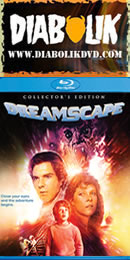
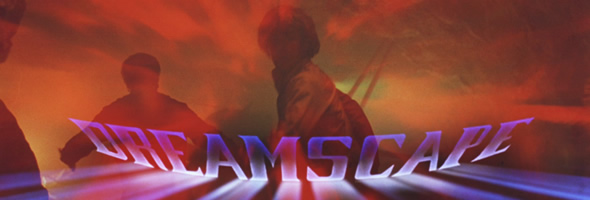
Color, 1984, 99m.
Directed by Joseph Ruben
Starring Dennis Quaid, Kate Capshaw, Max Von Sydow, Christopher Plummer, David Patrick Kelly, Eddie Albert
Scream Factory (Blu-ray) (US RA HD), Image Entertainment (Blu-ray & DVD) (US RA/R1 HD/NTSC), Turbine Medien (Blu-ray & DVD) (Germany RB/R2 HD/PAL), MIA (UK R2 PAL) / WS (1.85:1) (16:9
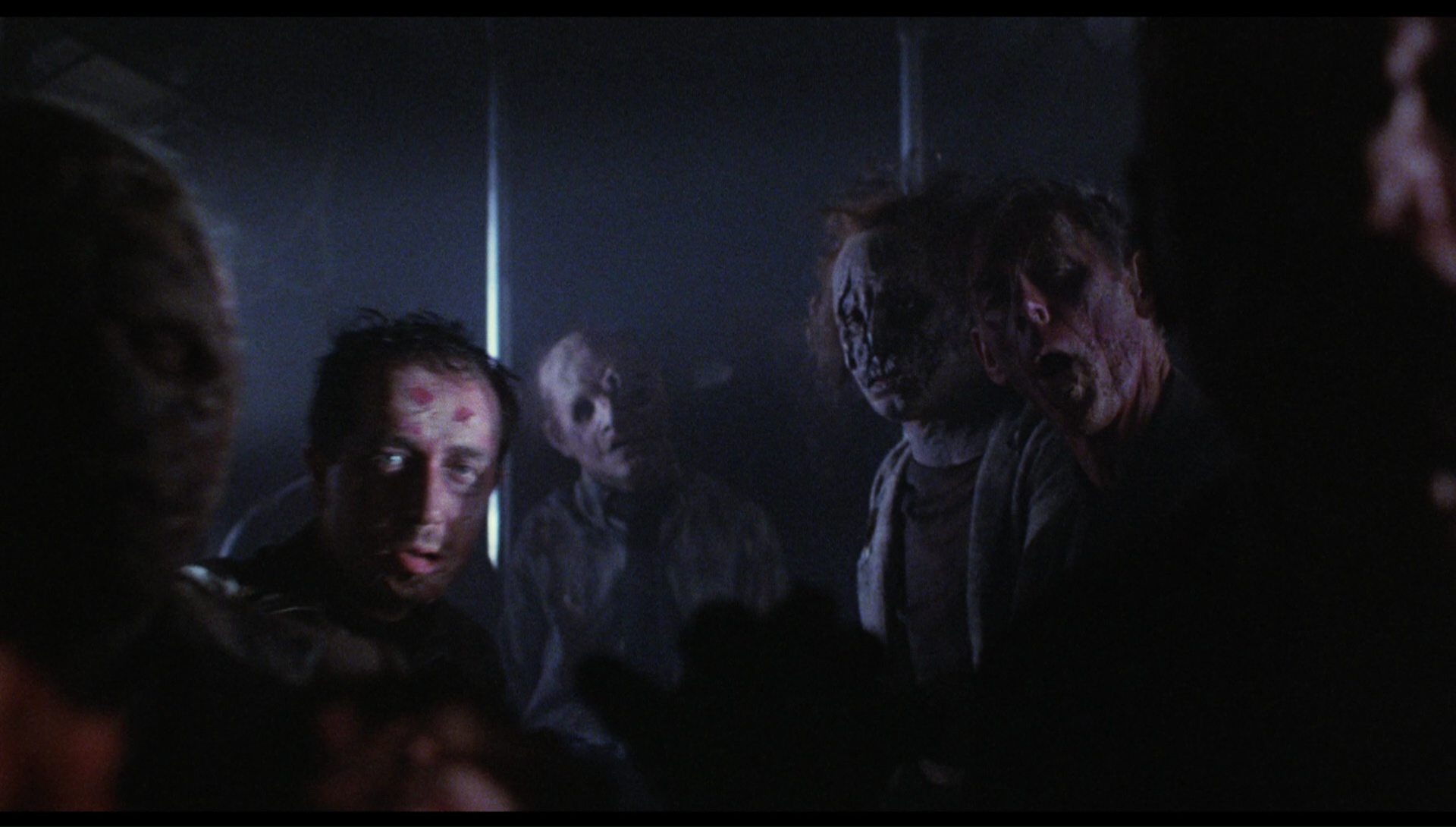
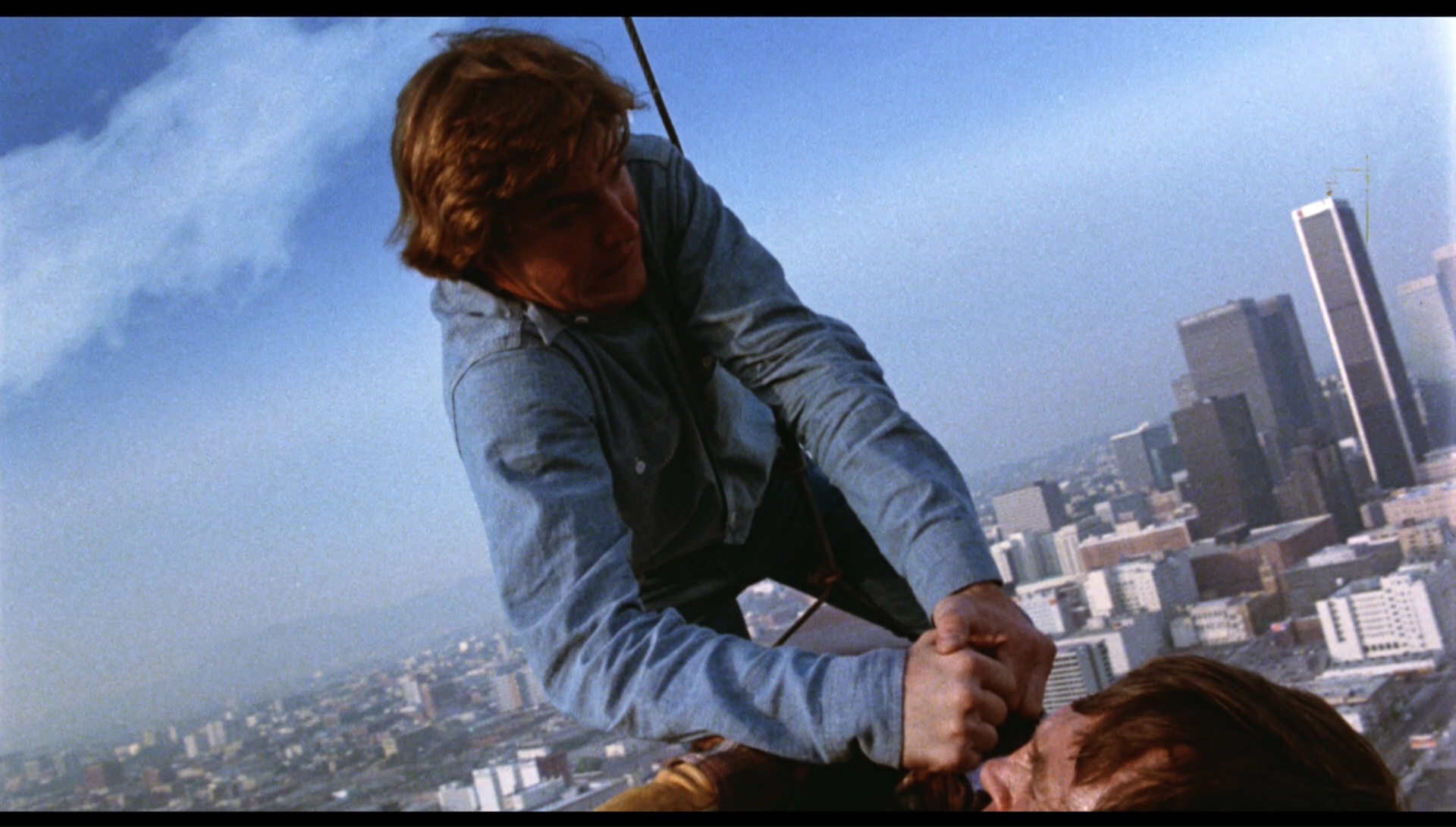 The first of a long string of dream-related horror and science fiction movies during the 1980s, Dreamscape plays like a more family-friendly alternative to Wes Craven's A Nightmare on Elm Street, which also involves people being murdered in their dreams by a man equipped with finger blades. Sporting a great cast of cinema vets mingling with up and coming '80s stars, this film became a familiar staple on cable TV and home video, where it won over a loyal audience that continues to this day.
The first of a long string of dream-related horror and science fiction movies during the 1980s, Dreamscape plays like a more family-friendly alternative to Wes Craven's A Nightmare on Elm Street, which also involves people being murdered in their dreams by a man equipped with finger blades. Sporting a great cast of cinema vets mingling with up and coming '80s stars, this film became a familiar staple on cable TV and home video, where it won over a loyal audience that continues to this day.
A government-funded group of scientists involved in dream studies led by Dr. Novotny (Von Sydow) tracks down one of the psychic community's former star pupils, Alex (Quaid), who lives a vagabond existence picking up money at horse races. Under Novotny's guidance, Alex is introduced to a process by which he can enter the dreams of sleeping patients and uncover the sources of their subconscious problems. Novotny's assistant, Jane (a pre-Temple of Doom Capshaw), sparks some immediate chemistry with Alex but keeps her distance for professional reasons. Meanwhile the project's secret "benefactor," sinister government bigwig Bob Blair (a none-too-subtle Christopher Plummer), makes veiled threats to Alex and spends his efforts coaching another dream-skilled psychic, the creepy and unstable Tommy Ray (The Warriors' Kelly). Soon Alex begins to put the pieces 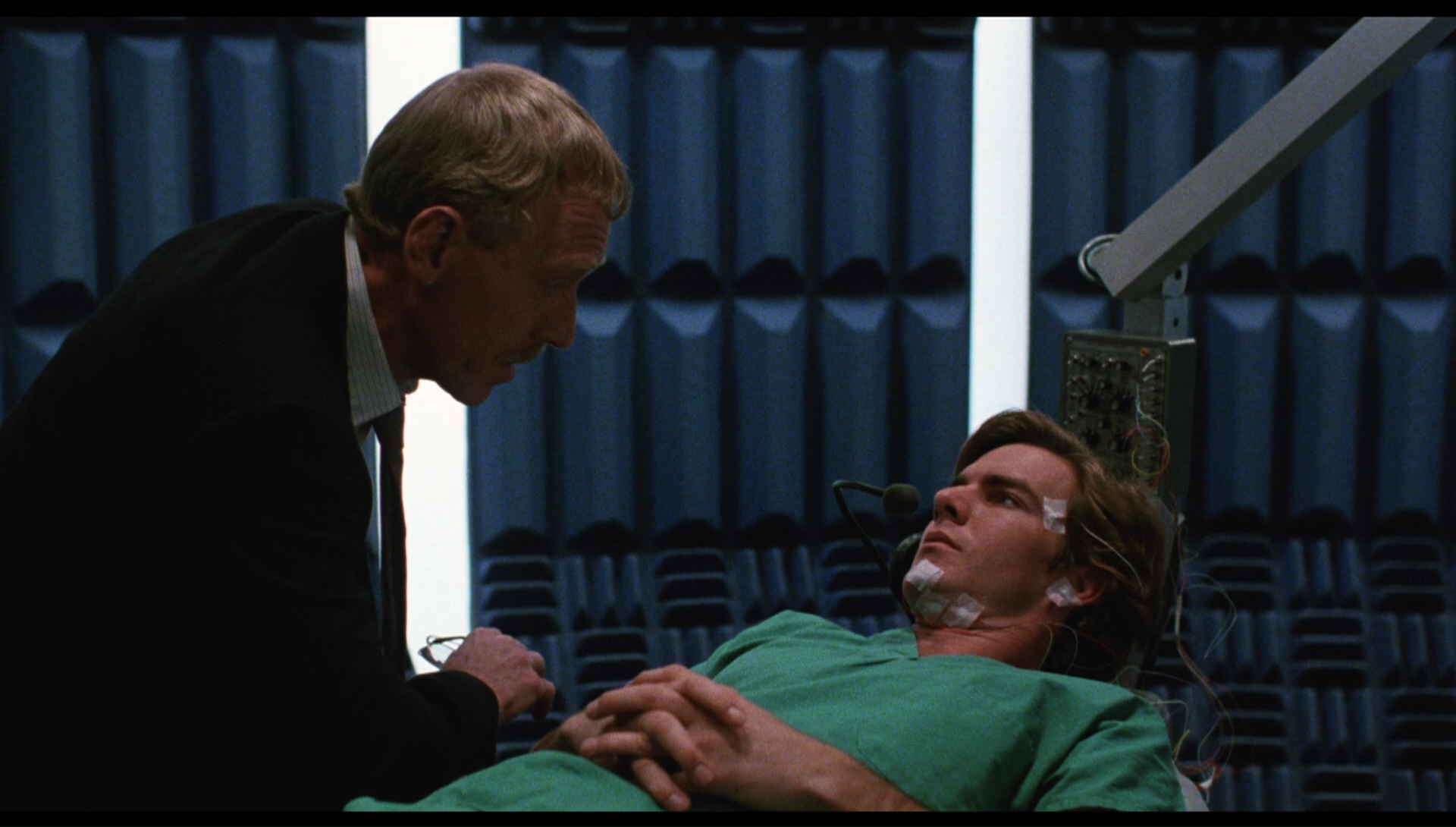 together and learns that the entire dream studies may have some connection to Blair's relationship with the US President (Eddie Albert), who has been experiencing traumatic nightmares involving nuclear destruction...
together and learns that the entire dream studies may have some connection to Blair's relationship with the US President (Eddie Albert), who has been experiencing traumatic nightmares involving nuclear destruction... 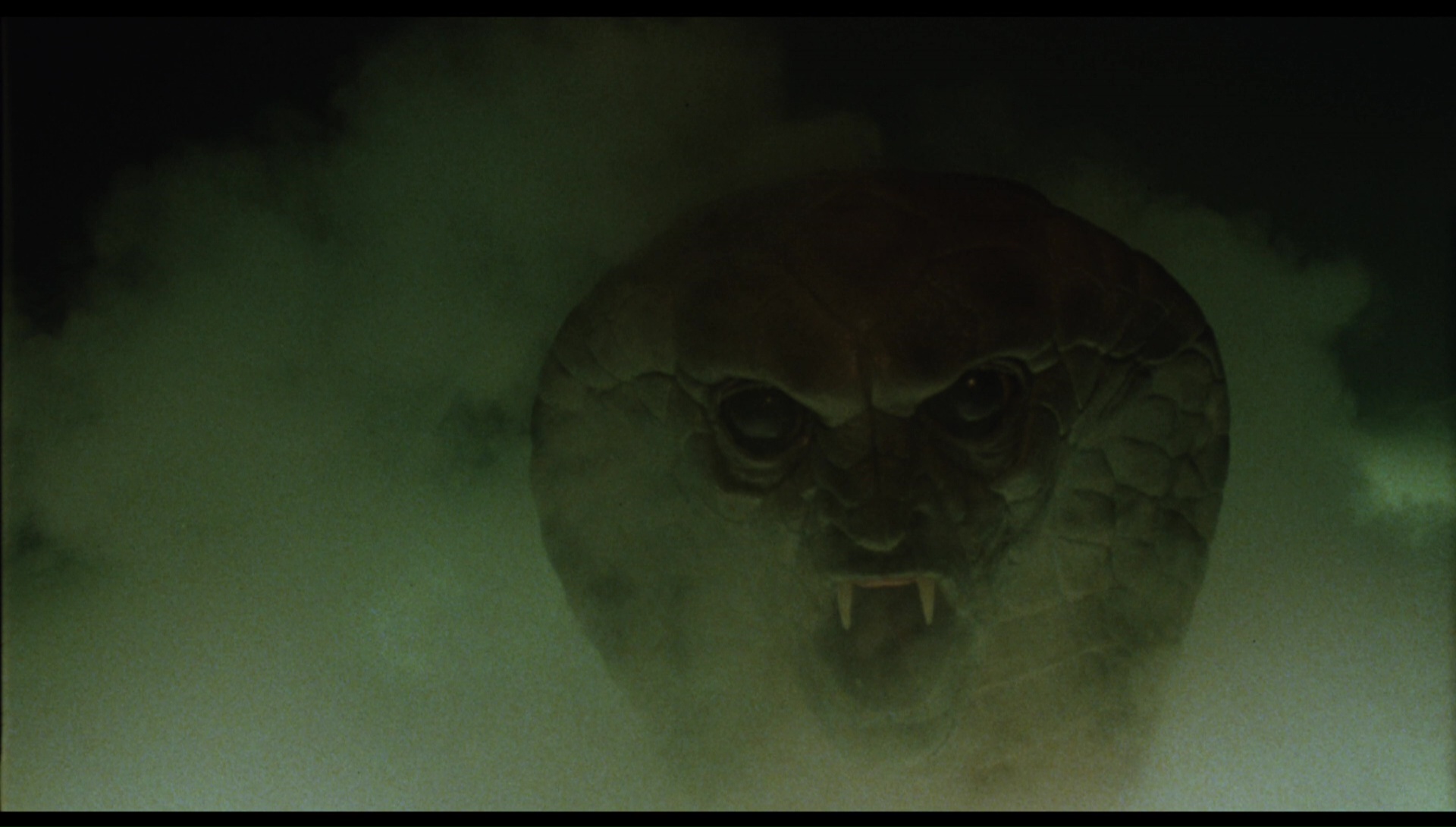
A fun, efficient, and imaginative popcorn muncher, Dreamscape was the first mainstream effort for director Joseph Ruben, who had previously cut his teeth on drive-in fare like The Pom Pom Girls. Here he injects some of the Hitchcock references (such as the Thornhill Institute) which would later appear more obviously in his best film, The Stepfather, and to a lesser degree in his later thrillers like The Good Son and Sleeping with the Enemy. Here he shows a comfortable hand with a complex storyline and a hefty cast of characters, all of whom remain vivid and mostly believable. Capshaw and Quaid are especially appealing in their early roles, and it would have been interesting to see them reteam in another film down the road. A few elements of the film have become unavoidably dated over the years, particularly the synth-heavy Maurice Jarre score (the most dated aspect of the film by a long shot), though the special effects, such as the great stop motion snakeman, are a pleasant reminder of how lucky this film was to be made before the onslaught of cheap CGI. Here the effects still manage to serve the story, which takes some odd turns every few minutes and climaxes with a genuinely nightmarish train sequence that scarred an entire generation of impressionable kids.
Best known in the history books as one of the first three films to be rated PG-13 by the MPAA (Red Dawn beat it by one week into theaters, while The Flamingo Kid got the 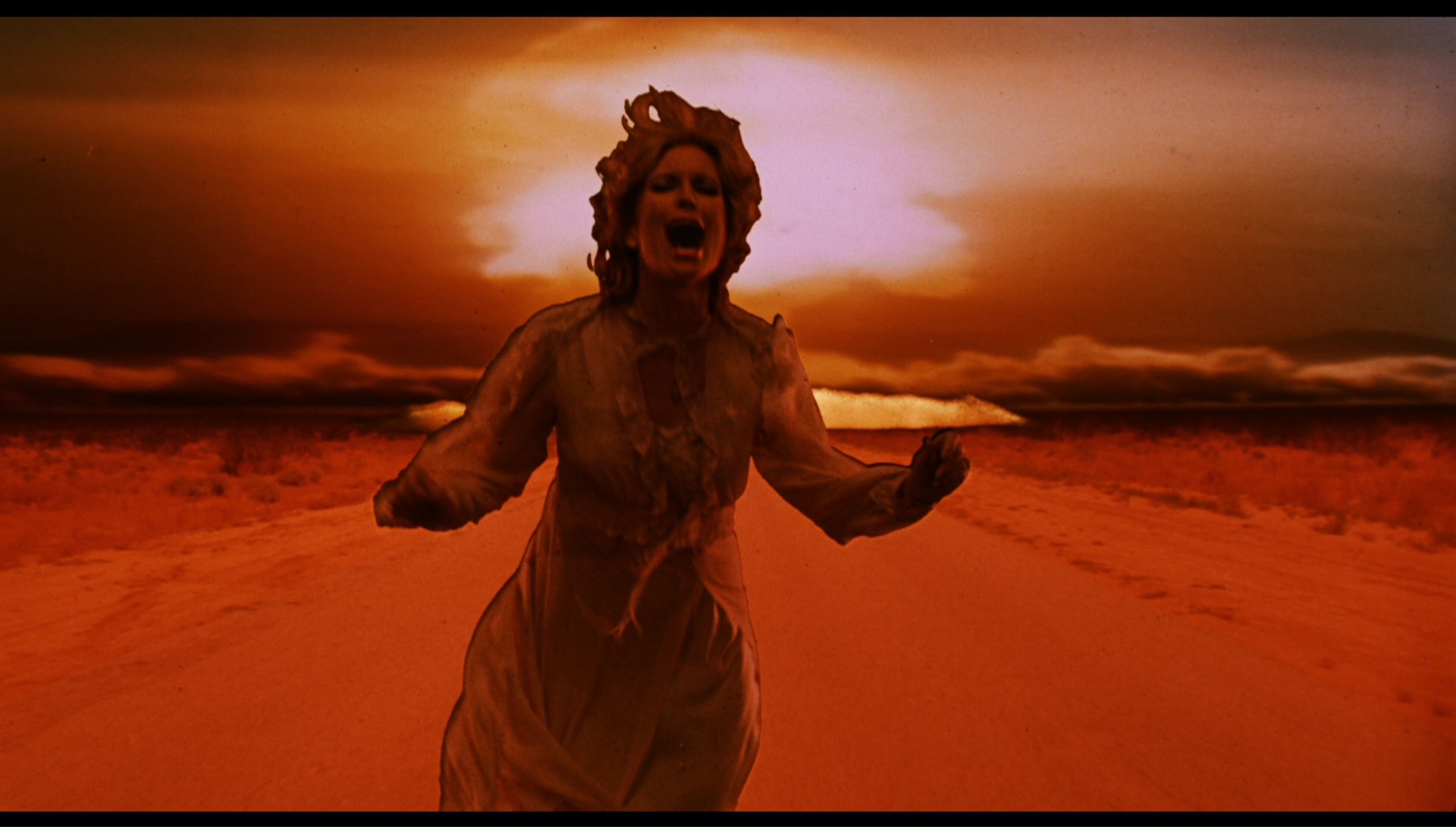 rating before either one and opened later), Dreamscape was actually trimmed very slightly to avoid an R rating and underwent more censorship in Britain, where shots involving those pesky, illegal (and glowing!) nunchucku were removed from theatrical prints and early video releases.
rating before either one and opened later), Dreamscape was actually trimmed very slightly to avoid an R rating and underwent more censorship in Britain, where shots involving those pesky, illegal (and glowing!) nunchucku were removed from theatrical prints and early video releases. 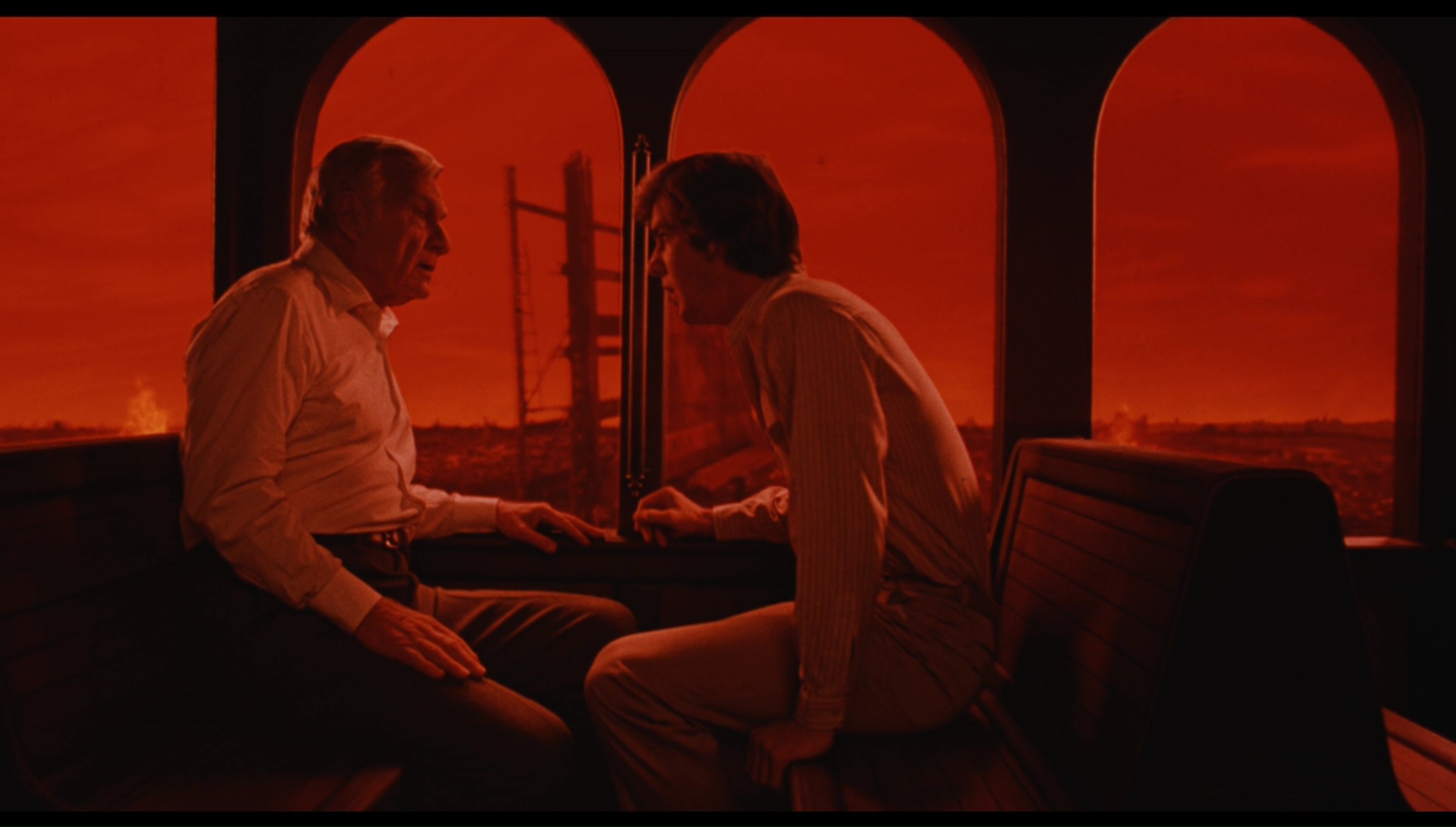 The longer "European" version features some additional straddling and general moaning during the Quaid/Capshaw sex dream (including a fleeting, dark topless profile shot) and a few extra frames of fake blood during the memorable snakeman nightmare sequence (which still packs quite a punch), though it doesn't make much difference either way. (Depending on how you saw it, some misframed or open matte releases also featured a bit of topless exposure in the cheating wife dream sequence, though that's not a censorship issue.) Fox released the film in theaters after snapping up the indie production after completion, but due to various contractual vagaries it ended up going through several different hands on home video in the United States. HBO Video originally issued it on VHS with Image Entertainment doing a laserdisc in 1988, and Image revisited it again in 2000 for DVD and 2010 on Blu-ray. As with all American releases, it features the usual PG-13 version (due to contractual reasons apparently, though film elements of the other cut have apparently also fallen off the face of the earth); the letterboxed transfer looked pretty good for DVD (even retaining some specks and dirt baked into several of the optical effects, especially the top of the skyscraper), but on Blu-ray the clarity of HD proved especially unforgiving with every bit of grit and every matte line looking extremely harsh, with oversharpening added to boot. The Dolby Digital 5.1 and DTS audio mixes both sound fine considering the age limitations on the source; some scenes play almost in mono or barely surround, while others erupt into full directional life, particularly the crucial dream sequences. The straight 2.0 surround track fares surprisingly well in comparison, and viewers may wish to compare them and choose their own preference. Also included is a running commentary track by members of the production team, including producer Bruce Cohn Curtis, writer David
The longer "European" version features some additional straddling and general moaning during the Quaid/Capshaw sex dream (including a fleeting, dark topless profile shot) and a few extra frames of fake blood during the memorable snakeman nightmare sequence (which still packs quite a punch), though it doesn't make much difference either way. (Depending on how you saw it, some misframed or open matte releases also featured a bit of topless exposure in the cheating wife dream sequence, though that's not a censorship issue.) Fox released the film in theaters after snapping up the indie production after completion, but due to various contractual vagaries it ended up going through several different hands on home video in the United States. HBO Video originally issued it on VHS with Image Entertainment doing a laserdisc in 1988, and Image revisited it again in 2000 for DVD and 2010 on Blu-ray. As with all American releases, it features the usual PG-13 version (due to contractual reasons apparently, though film elements of the other cut have apparently also fallen off the face of the earth); the letterboxed transfer looked pretty good for DVD (even retaining some specks and dirt baked into several of the optical effects, especially the top of the skyscraper), but on Blu-ray the clarity of HD proved especially unforgiving with every bit of grit and every matte line looking extremely harsh, with oversharpening added to boot. The Dolby Digital 5.1 and DTS audio mixes both sound fine considering the age limitations on the source; some scenes play almost in mono or barely surround, while others erupt into full directional life, particularly the crucial dream sequences. The straight 2.0 surround track fares surprisingly well in comparison, and viewers may wish to compare them and choose their own preference. Also included is a running commentary track by members of the production team, including producer Bruce Cohn Curtis, writer David 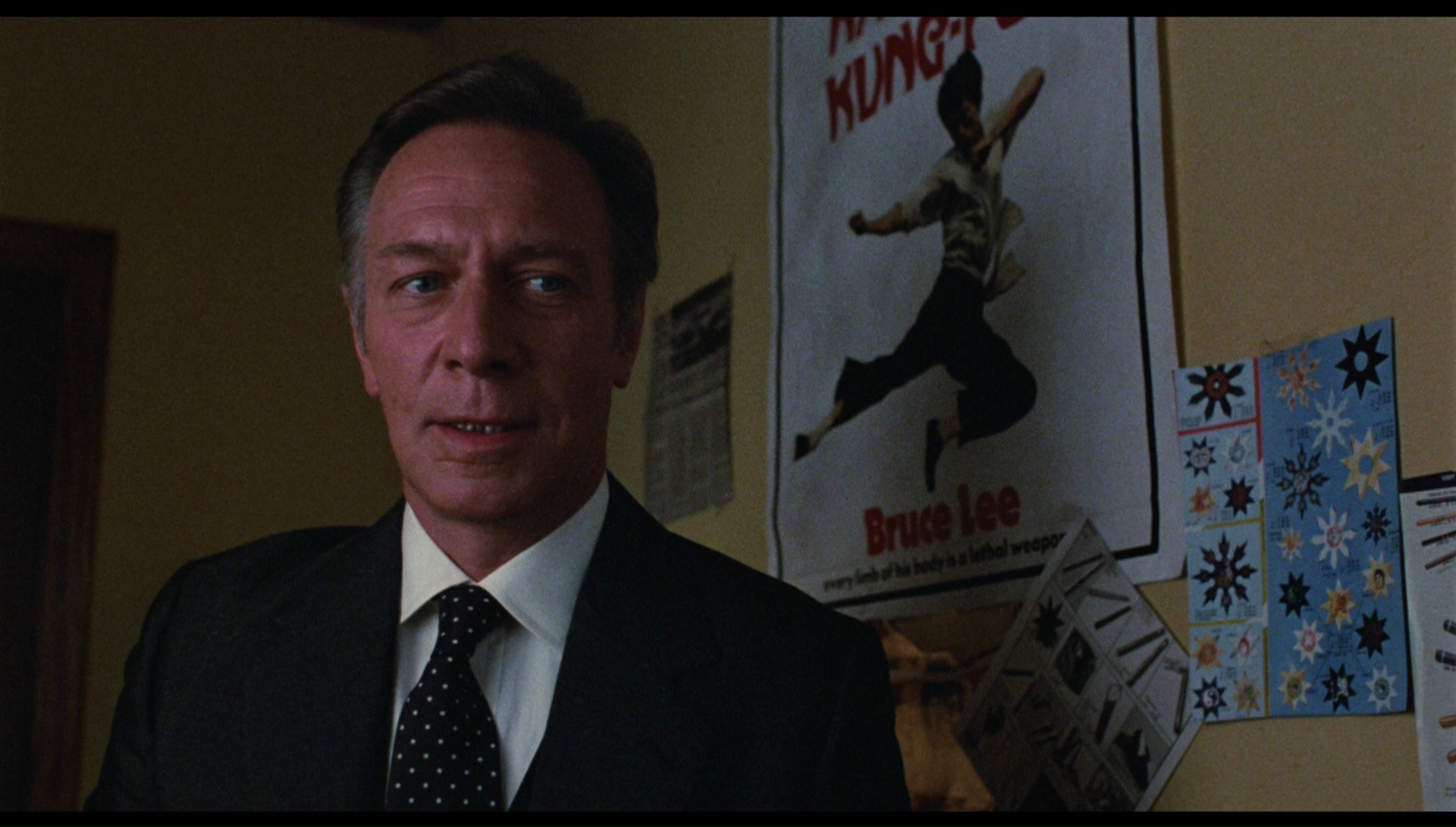 Loughery, and FX master Craig Reardon, which covers the film's origins and how the dreams were
Loughery, and FX master Craig Reardon, which covers the film's origins and how the dreams were 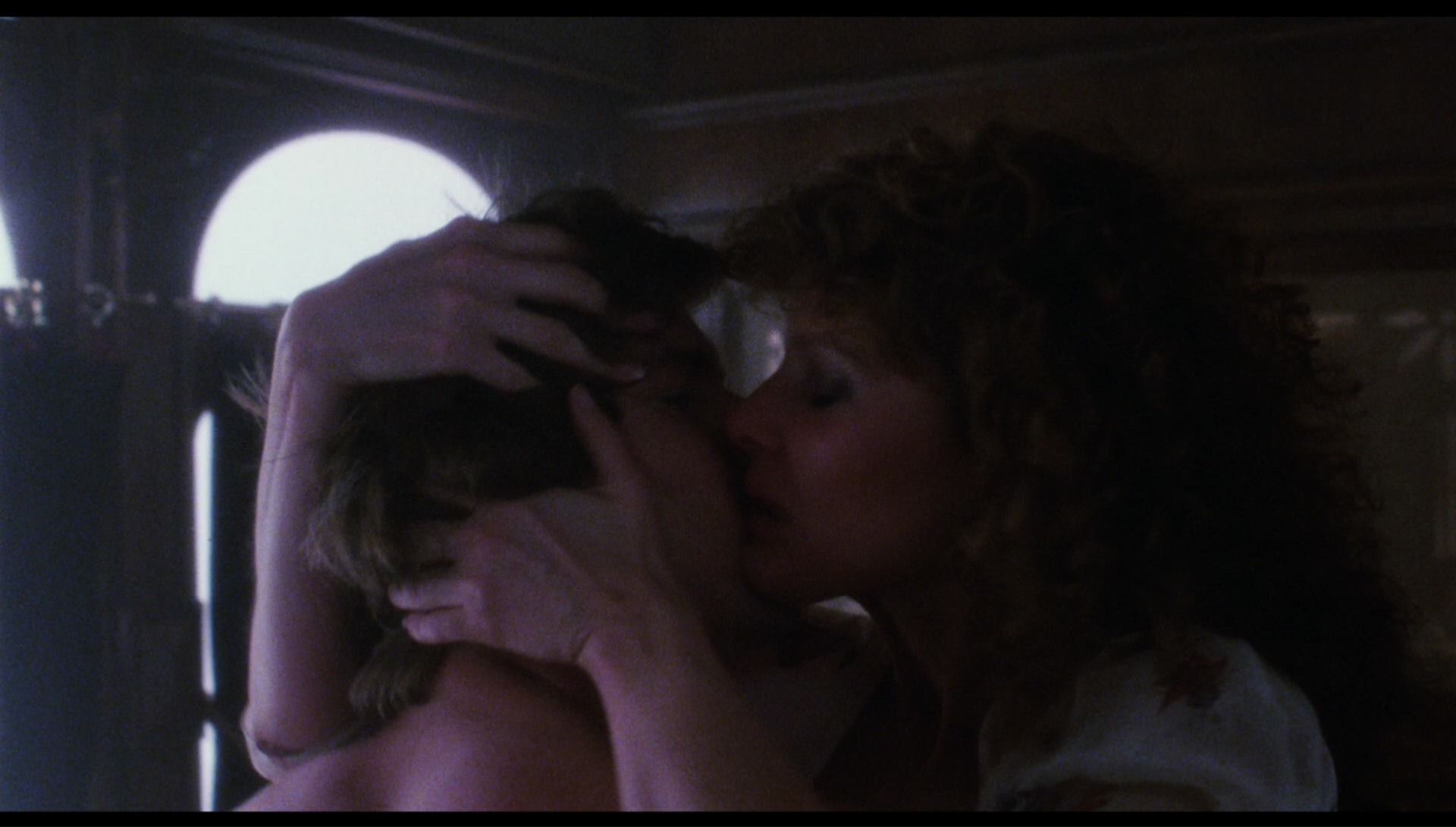 designed to accommodate the technical possibilities of the period, along with a multitude of other topics including Jarre's hiring to produce a symphonic score, only for him to turn in an electronic one instead. Other goodies include some brief snakeman test footage and an amusing "Monster!" feature on the main menu, which incidentally is very nicely designed and a perfect reflection of the film's mood. Those extras were ported over for a German Blu-ray release in 2016, which also splices in the extended love scene footage from a very dark, fuzzy VHS copy; however, if you really want it, that's about the only way to get it now.
designed to accommodate the technical possibilities of the period, along with a multitude of other topics including Jarre's hiring to produce a symphonic score, only for him to turn in an electronic one instead. Other goodies include some brief snakeman test footage and an amusing "Monster!" feature on the main menu, which incidentally is very nicely designed and a perfect reflection of the film's mood. Those extras were ported over for a German Blu-ray release in 2016, which also splices in the extended love scene footage from a very dark, fuzzy VHS copy; however, if you really want it, that's about the only way to get it now.
In 2016, Scream Factory revisited the film for a Blu-ray release with a fresh 2K scan from the original negative, something it's needed for a very, very long time. The contents of the film itself are the same as the prior American cut, and the transfer corrects many preexisting issues including what appears to be quite a bit of dirt removal on those troublesome optical shots. It's also a few notches darker, getting the black levels back to their 35mm appearance so the matte lines and other flaws don't stand out nearly as much; the 1.85:1 framing also reveals a notable amount of extra visual info on the horizontal sides and bottom compared to the prior 1.78:1 framing. (Here's a shot from the earlier HD transfer for comparison.) Audio is presented in DTS-HD MA 5.1 and 2.0 English options with optional English subtitles; the 5.1 is most definitely the way to go as it features more presence and sturdier bass than the stereo one, which sounds flat and tinny by comparison.
The trailer and monster test footage are carried over here, but you also get a ton of new material here including the excellent 61-minute "Dreamscapes and Dreammakers" with Ruben, story creator and co-screenwriter David Loughery, Kelly, Reardon, producer Bruce Cohn Curtis, associate producer and co-writer Chuck Russell (who oddly enough went on to do A Nightmare on Elm Street 3: Dream Warriors), editor Richard Halsey, cinematographer 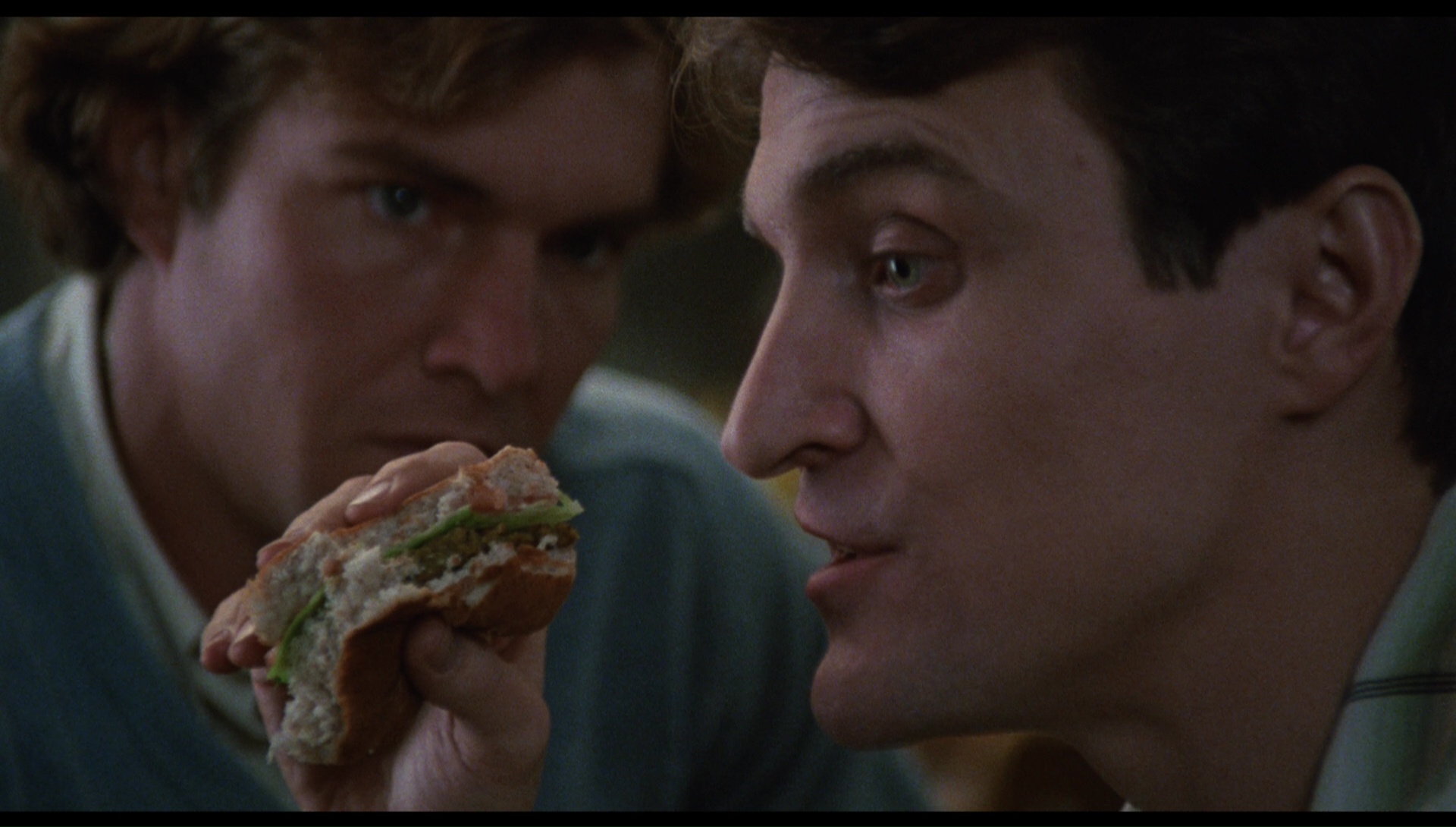 Brian Tufano, miniature supervisor Susan Turner, special
Brian Tufano, miniature supervisor Susan Turner, special 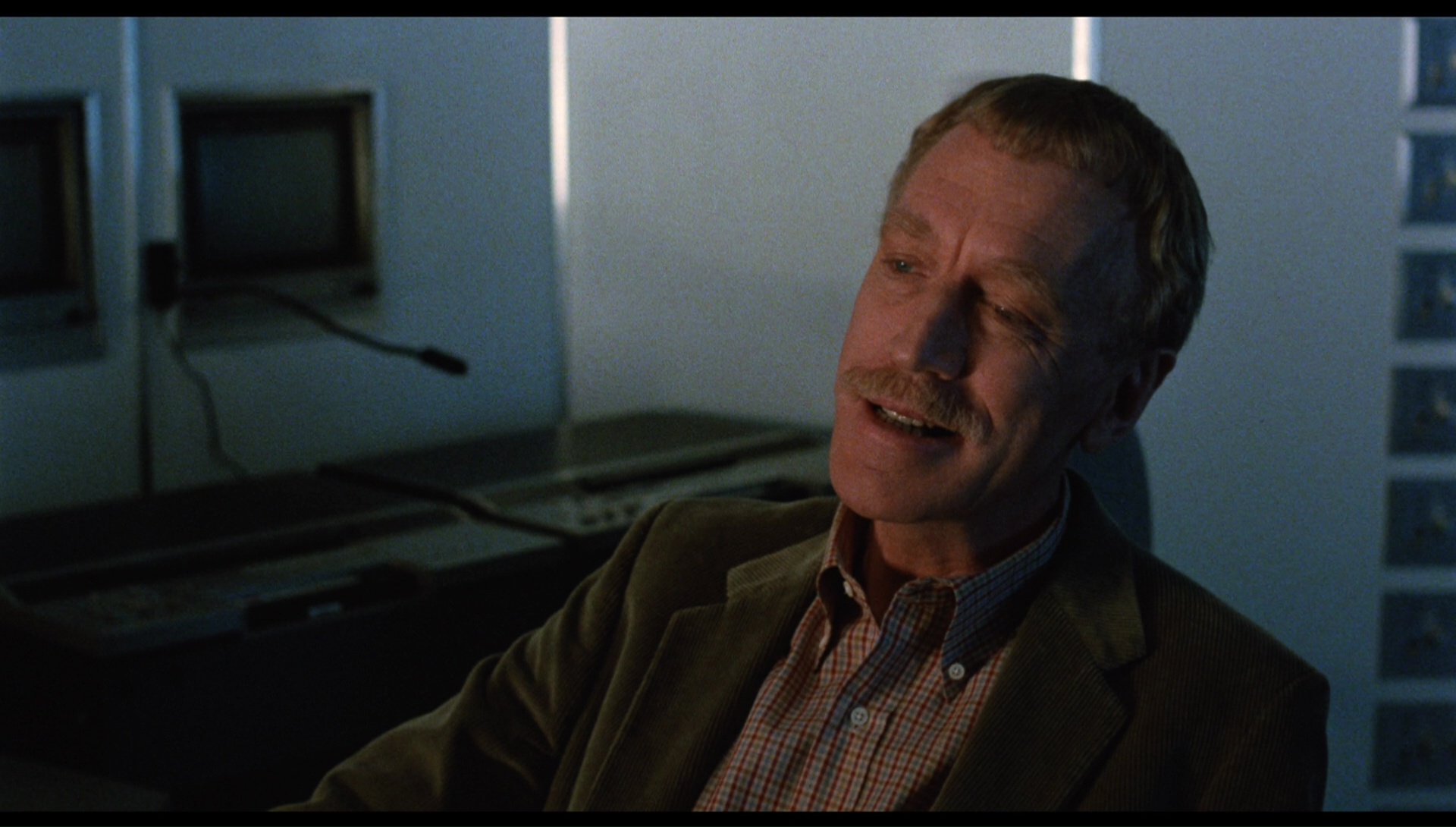 photography specialist Kevin Kutchaver, and several others, which starts off covering the bases of how the story elements came together (different genres for each dream, the old wives' tale of dying in your sleep, etc.) and then walks through the technical ins and outs of how the dream sequences were accomplished with a variety of cinematic tricks involving optical printers, wide lenses, animation, and other bits of sleight of hand, all on a low budget. Lots of storyboards and models add make it a lot of fun to watch, too. The 23-minute "Nightmares and Dreamsnakes" (23 mins.) brings back Loughery, Ruben, Russell, Kelly, and Reardon going more specifically into the origins and creation of the snake man, which originated as a rat-human creature but evolved through the screenplay process into the memorable concoction we know now, complete with tons of behind-the-scenes photos. Quaid finally gets his say about the film in the solid 14-minute "The Actor's Journey," chatting about how he got his start in acting with Ruben's earlier Our Winning Season (and the unmentioned Gorp) before moving on to this film after doing research into topics like astral projection, which played into an experience he had during the shoot. (And yes, he did take sax lessons, too.) A 26-minute video conversation between Curtis and Russell is a friendly chat between the two men (sort of in the style of those Criterion conversation pieces) about how they reacted to the original script, worked on the project once Fox decided not to turn it into a big-budget production, and became good friends with many of the participants of putting the film together. Also included is a snake man production gallery, while the disc itself features the usual reversible sleeve options with the original Raiders-inspired poster art and a more fantastical new design.
photography specialist Kevin Kutchaver, and several others, which starts off covering the bases of how the story elements came together (different genres for each dream, the old wives' tale of dying in your sleep, etc.) and then walks through the technical ins and outs of how the dream sequences were accomplished with a variety of cinematic tricks involving optical printers, wide lenses, animation, and other bits of sleight of hand, all on a low budget. Lots of storyboards and models add make it a lot of fun to watch, too. The 23-minute "Nightmares and Dreamsnakes" (23 mins.) brings back Loughery, Ruben, Russell, Kelly, and Reardon going more specifically into the origins and creation of the snake man, which originated as a rat-human creature but evolved through the screenplay process into the memorable concoction we know now, complete with tons of behind-the-scenes photos. Quaid finally gets his say about the film in the solid 14-minute "The Actor's Journey," chatting about how he got his start in acting with Ruben's earlier Our Winning Season (and the unmentioned Gorp) before moving on to this film after doing research into topics like astral projection, which played into an experience he had during the shoot. (And yes, he did take sax lessons, too.) A 26-minute video conversation between Curtis and Russell is a friendly chat between the two men (sort of in the style of those Criterion conversation pieces) about how they reacted to the original script, worked on the project once Fox decided not to turn it into a big-budget production, and became good friends with many of the participants of putting the film together. Also included is a snake man production gallery, while the disc itself features the usual reversible sleeve options with the original Raiders-inspired poster art and a more fantastical new design.
Updated review on November 25, 2016.












